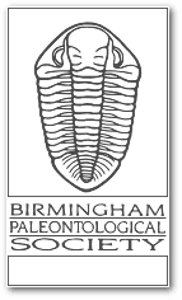Paleo in the News
Reconstructing ancient climate provides clues to climate change
Research helps reconstruct an ancient climate and challenges the timing of the Andes Mountains uplift.
Categories: Fossils
Reconstructing ancient climate provides clues to climate change
Research helps reconstruct an ancient climate and challenges the timing of the Andes Mountains uplift.
Categories: Fossils
Indigenous cultural burning has protected Australia's landscape for millennia, study finds
Ancient cultural burning practices carried out by Indigenous Australians limited fuel availability and prevented high intensity fires in southeastern Australia for thousands of years, according to new research.
Categories: Fossils
World's largest tree is also among the oldest living organisms
DNA analysis suggests Pando, a quaking aspen in Utah with thousands of stems connected by their roots, is between 16,000 and 81,000 years old
Categories: Fossils
Buried Alive: Carbon dioxide release from magma deep beneath ancient volcanoes was a hidden driver of Earth's past climate
A team discovered that, contrary to present scientific understanding, ancient volcanoes continued to spew carbon dioxide into the atmosphere from deep within the Earth long past their period of eruptions.
Categories: Fossils
Ancient DNA brings to life history of the iconic aurochs, whose tale is intertwined with climate change and human culture
Geneticists have deciphered the prehistory of aurochs -- the animals that were the focus of some of the most iconic early human art -- by analyzing 38 genomes harvested from bones dating across 50 millennia and stretching from Siberia to Britain. The aurochs roamed in Europe, Asia and Africa for hundreds of thousands of years. Adorned as paintings on many a cave wall, their domestication to create cattle gave us a harnessed source of muscle, meat and milk. Such was the influence of this domestication that today their descendants make up a third of the world's mammalian biomass.
Categories: Fossils
Large herbivores have lived in Yellowstone National Park for more than 2,000 years
Large herbivores like bison or elk have continuously lived in the Yellowstone National Park region for about 2,300 years, according to a new analysis of chemicals preserved in lake sediments.
Categories: Fossils
Tense docu-thriller exposes the cruelties of commercial whale trade
Orca – Black & White Gold digs deep into the dirty waters surrounding the killer whale trade and captures a daring rescue mission
Categories: Fossils
Oldest tadpole fossil known to science dates back 161 million years
A fossil of a tadpole from Argentina is 161 million years old - and isn't that different from some modern species
Categories: Fossils
Sinuses prevented prehistoric croc relatives from deep diving
Paleobiologists have found that the sinuses of ocean dwelling relatives of modern-day crocodiles prevented them from evolving into deep divers like whales and dolphins.
Categories: Fossils
Sinuses prevented prehistoric croc relatives from deep diving
Paleobiologists have found that the sinuses of ocean dwelling relatives of modern-day crocodiles prevented them from evolving into deep divers like whales and dolphins.
Categories: Fossils
Fossil hunters strike gold with new species
Paleontologists have identified fossils of an ancient species of bug that spent the past 450 million years covered in fool's gold in central New York. The new species, Lomankus edgecombei, is a distant relative of modern-day horseshoe crabs, scorpions, and spiders. It had no eyes, and its small front appendages were best suited for rooting around in dark ocean sediment, back when what is now New York state was covered by water.
Categories: Fossils
Fossil hunters strike gold with new species
Paleontologists have identified fossils of an ancient species of bug that spent the past 450 million years covered in fool's gold in central New York. The new species, Lomankus edgecombei, is a distant relative of modern-day horseshoe crabs, scorpions, and spiders. It had no eyes, and its small front appendages were best suited for rooting around in dark ocean sediment, back when what is now New York state was covered by water.
Categories: Fossils
Weird microbes could help rewrite the origin of multicellular life
Single-celled organisms called archaea can become multicellular when compressed, highlighting the role of physical forces in evolution
Categories: Fossils
How mammals got their stride
Researchers reveal new insights into the complex evolutionary history behind the distinctive upright posture of modern placental and marsupial mammals, showing the transition was surprisingly complex and nonlinear, and occurred much later than previously believed.
Categories: Fossils
How mammals got their stride
Researchers reveal new insights into the complex evolutionary history behind the distinctive upright posture of modern placental and marsupial mammals, showing the transition was surprisingly complex and nonlinear, and occurred much later than previously believed.
Categories: Fossils
'Well-man' thrown from castle identified from 800-year-old Norse saga
A passage in the Norse Sverris Saga, the 800-year-old story of King Sverre Sigurdsson, describes a military raid that occurred in AD 1197, during which a body was thrown into a well at Sverresborg Castle, outside Trondheim in central Norway, likely as an attempt to poison the main water source for the local inhabitants. A new study describes how researchers used ancient DNA to corroborate the events of the saga and discover details about the 'Well-man,' blending history and archaeology with science and setting a precedent for future research on historical figures.
Categories: Fossils
Your gut bacteria are at war - and force their enemies to switch sides
Rival tribes of bacteria armed with poison darts are fighting it out in your gut, with armies of traitors often winning the day
Categories: Fossils
Fossils unveil how southern Europe's ecosystem changed through Glacial-Interglacial Stages
Fossils from more than 600,000 years ago reveal how Southern Europe's animal community shifted between warm and cold climate fluctuations, according to a new study.
Categories: Fossils
Fossils unveil how southern Europe's ecosystem changed through Glacial-Interglacial Stages
Fossils from more than 600,000 years ago reveal how Southern Europe's animal community shifted between warm and cold climate fluctuations, according to a new study.
Categories: Fossils
